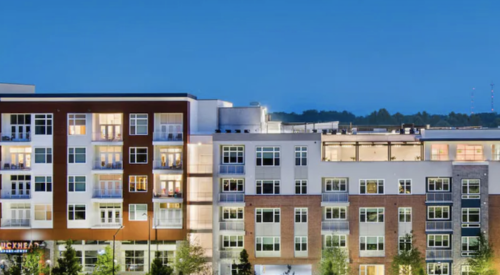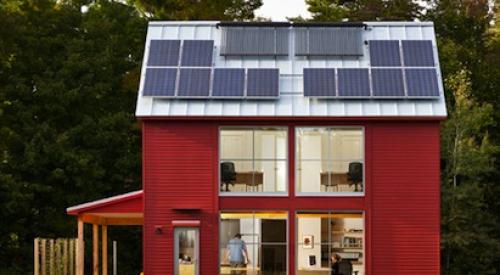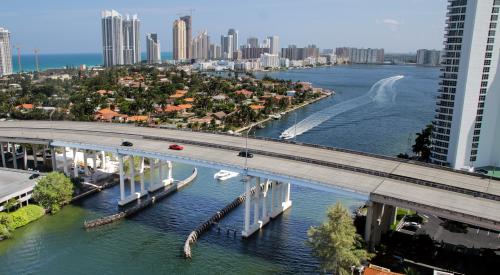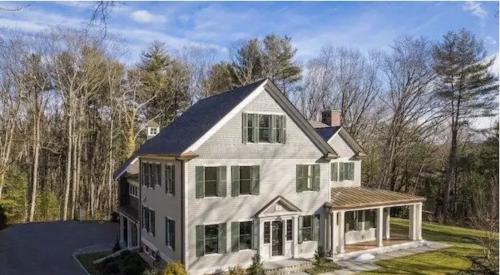Heat Island Effect can Turn Deadly in Extreme Conditions
Of all the impacts of global climate change, it’s extreme heat that kills more Americans each year than any other weather-related event. The Centers for Disease Control and Prevention reports that as many as 600 people die from extreme heat in the U.S. every year. The urban heat island effect makes cities significantly warmer than their surrounding suburbs, exurbs, and rural areas—making them potentially deadly for those who lack air conditioning.
A 2016 Columbia University study projected that by 2080 up to 3,300 New Yorkers could die annually from intense heat exacerbated by climate change. The city launched a $106-million “Cool Neighborhoods” plan last year to mitigate the risks of extreme heat.
The plan includes painting surfaces white, planting more trees, creating green roofs, and building other green infrastructure to cool down several neighborhoods. In addition, the plan includes improving emergency cooling center signage and making those facilities more inviting.
In Many Markets, Green Features are More of a Requirement for Apartment Renters
Renters in many U.S. cities have come to expect green features in apartments that they rent with an eye toward energy efficiency and healthy indoor air. New apartment units today almost always include some green features, with renovations often incorporating sustainable design components. Some 42% of overall multifamily financing provided by Fannie Mae in 2017 qualified for its Green Rewards program.
That program offers lower interest rates to apartment properties that have earned green building certifications or pledge to cut their energy use by at least 25% through renovations. Tenants are willing to pay an extra $27.21 a month to live in buildings that have green certifications, according to the “2017 NMHC/Kingsley Renter Preferences Report.”
With the cost of incorporating many green features in apartment properties having dropped to be roughly comparable to conventional construction, landlords are meeting the wishes of the market. Fannie Mae’s Green Rewards program often slices about a fifth to a third of a percentage point off the interest rates offered to apartment borrowers. In 2017, Fannie Mae provided $27.6 billion in financing to qualified apartment properties through Green Rewards.
Maracay Homes Named Outstanding Single-Family Developer by USGBC
Maracay Homes, based in Scottsdale, Ariz., was named Outstanding Single-Family Developer by the U.S. Green Building Council in its 2017 LEED Homes Award program. The company, which has constructed more than 9,000 homes, was cited for being a leader in Arizona’s sustainable real estate industry.
Among the other winners, were:
• The House at Cornell Tech, Roosevelt Island, N.Y., developed by The Hudson Companies and Related Companies. On Cornell Tech’s Roosevelt Island campus, “The House,” a LEED Platinum multifamily residence open to students, staff, and faculty, uses 60%-70% less energy than that of a similarly sized typical building.
• Historic District Infill Home, Decatur, Ga., for Outstanding Single-Family Project. Built and owned by SK Collaborative principal Carl Seville, the Historic District Infill Home fit seamlessly into a prestigious existing historic district while earning LEED Platinum certification.
• PassiveTown Phase 3, Building K, Kurobe, Japan, for Outstanding Multi-Family Project. Developed by YKK Fudosan Co., PassiveTown Phase 3, Building K is a LEED Platinum low-rise multi-family residence and the first LEED for Homes project in Japan
Boston Condo Boom Prompts Flood of Work for Soundproofers
Boston has experienced a condo boom over the past few years and along with it has come increased demand for soundproofing. The current market of high real estate prices sets higher expectations for acoustic privacy.
A growing number of condo- and apartment-dwellers won’t put up with unwanted sound. Mixed use projects have some of the toughest acoustic challenges, especially when businesses like an athletic club are part of the mix.
Wealthy Atlanta Suburb Wants to Secede From City
Some residents of a cluster of gated communities in Stockbridge, Ga., a predominantly black city about 20 miles south of Atlanta, want to break away from the city. One complaint is that the area can’t attract amenities common to wealthy areas, such as in the Buckhead section of Atlanta, because it is surrounded by lower income neighborhoods.
The idea is for the whole set of communities to break away and form their own town to make it more attractive for new businesses. “De-annexation” could mean that after Stockbridge splits up, the poorer parts would be left with $15.5 million of debt.













